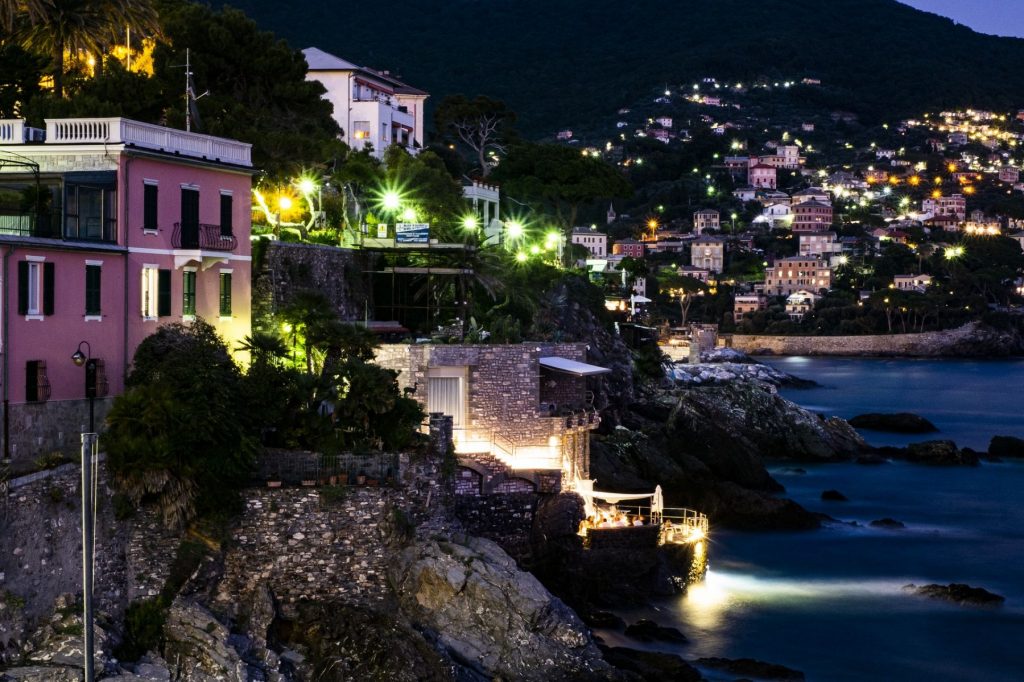Reading time: 3 minutes
The coast of Liguria is one of the most famous in the world. Names like Portofino, Cinque Terre, Genoa, Sanremo, and Savona all sound familiar. The two coastal towns of Recco and Camogli are lesser-known but just as spectacular! Let’s find out what to do and see on the Ligurian Riviera!

Recco
Recco is located between Genoa and San Remo on what is known as the Golfo Paradiso (Paradise Gulf) of the Tyrrhenian Sea. Sadly, Recco was subject to heavy bombing during World War II which practically destroyed the old city. Most of what visitors see today was rebuilt beginning in the 1950s.
The church of the Madonna del Suffragio dating to the 1700s and that of St. Francis are worth a visit although they have been entirely reconstructed.

Aside from the obvious turquoise blue sea, the area also has a number of hiking trails that depart from the historic center and climb up into the surrounding hills for views that are out of this world. Three of these are Megli, Polanesi, and the Collina di Cortù which reaches the church of St. Bartholomew.
Known as the “gastronomy capital of Liguria”, Recco is most famous for its focaccia al formaggio or focaccia di Recco. Other specialties include pesto dishes like pesto lasagna and even crepes al pesto. Chickpea flour is also commonly used.
Camogli
Camogli is the quintessential postcard Ligurian coastal town with its pastel-colored houses that hug the sloping hills. In the historic center, aside from simply wandering through the streets and admiring the fabulous flowered balconies, you’ll want to see the Basilica of Santa Maria Assunta dating to the 12th century. The porticciolo (marina) and promontory are full of restaurants, bars, cafes, and shops that will delight any visitor.
Have you already chosen this destination?
Right next to the Basilica is the medieval fortress, the Castello della Dragonara which provides an excellent view of Portofino.
If time allows, one of the most fascinating places on the entire Ligurian coast is the Abbey of San Fruttuoso located in Camogli but only reachable by a trekking route or by ferry. Since 1983 the abbey has been named an “architectural heritage” site by the Italian government. Originally a Benedictine monastery dating back to the year 1000, the abbey was later renovated by the Doria family.


